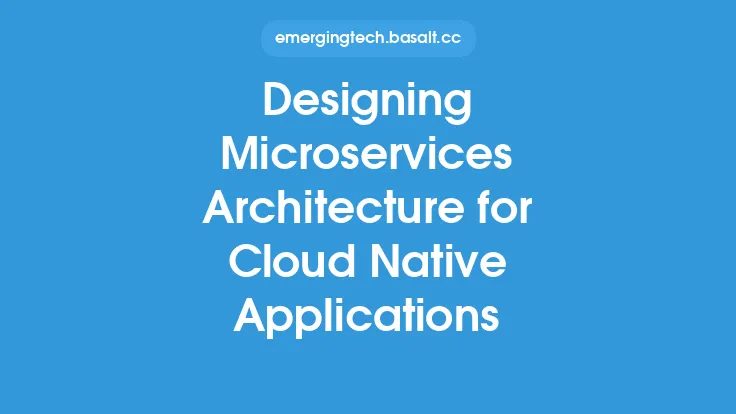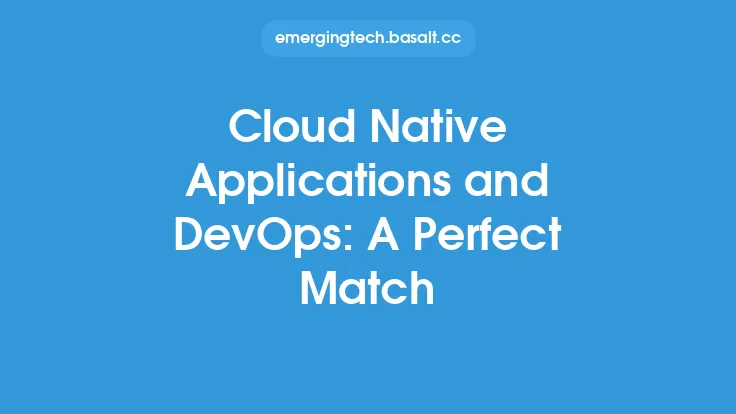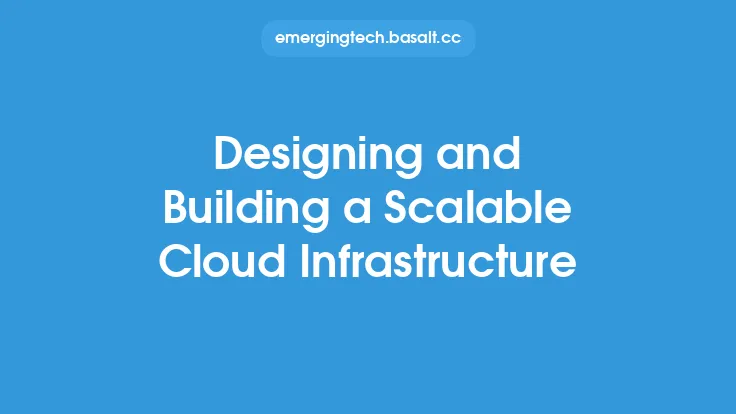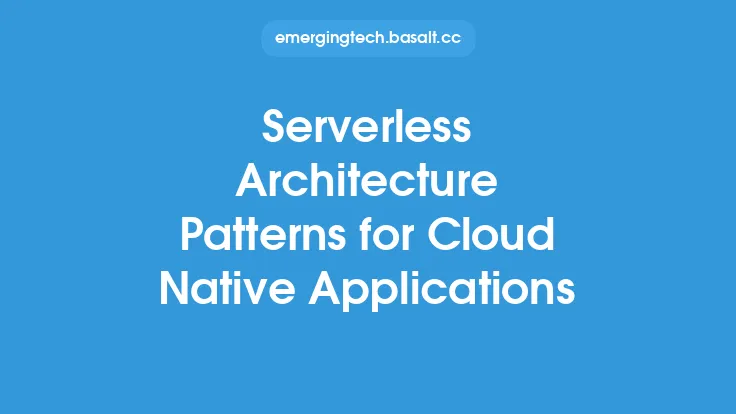Building scalable cloud native applications requires a deep understanding of the underlying principles and technologies that enable scalability, reliability, and maintainability. At its core, cloud native application development is about creating software systems that are designed to take advantage of the cloud computing model, which provides on-demand access to a shared pool of configurable computing resources. To achieve scalability, cloud native applications must be designed to handle increasing loads and traffic without compromising performance.
Introduction to Cloud Native Applications
Cloud native applications are designed to be scalable, flexible, and resilient. They are built using a microservices architecture, which allows for the creation of independent services that can be developed, deployed, and scaled individually. This approach enables developers to use the best programming language and framework for each service, rather than being limited to a single technology stack. Cloud native applications also rely heavily on containerization, which provides a lightweight and portable way to deploy applications. Containers ensure that applications are isolated from each other and from the underlying infrastructure, making it easier to manage and scale them.
Principles of Scalable Cloud Native Applications
To build scalable cloud native applications, developers must follow several key principles. First, applications must be designed to be stateless, meaning that they do not store any data locally. Instead, data is stored in a centralized database or cache, which can be accessed by multiple instances of the application. This approach enables applications to be scaled horizontally, by adding more instances as needed. Second, applications must be designed to be loosely coupled, meaning that each service is independent and can be developed, deployed, and scaled separately. This approach enables developers to make changes to one service without affecting others. Third, applications must be designed to be fault-tolerant, meaning that they can continue to operate even if one or more services fail.
Cloud Native Application Design Patterns
Several design patterns are commonly used in cloud native application development. The first is the microservices architecture pattern, which involves breaking down an application into smaller, independent services. Each service is responsible for a specific business capability and can be developed, deployed, and scaled independently. The second is the event-driven architecture pattern, which involves using events to communicate between services. This approach enables services to be loosely coupled and allows for greater flexibility and scalability. The third is the service-oriented architecture pattern, which involves organizing services around business capabilities. This approach enables developers to create services that are aligned with business needs and can be easily integrated with other services.
Scalability Considerations
When building scalable cloud native applications, several scalability considerations must be taken into account. First, applications must be designed to handle increasing loads and traffic without compromising performance. This can be achieved by using load balancers, which distribute traffic across multiple instances of an application. Second, applications must be designed to handle failures and errors without compromising availability. This can be achieved by using redundancy and failover mechanisms, which ensure that applications remain available even if one or more instances fail. Third, applications must be designed to handle changes in demand without compromising performance. This can be achieved by using autoscaling mechanisms, which automatically add or remove instances based on demand.
Cloud Native Application Deployment Options
Cloud native applications can be deployed using several different options. The first is a public cloud provider, such as Amazon Web Services (AWS), Microsoft Azure, or Google Cloud Platform (GCP). These providers offer a range of services and tools that enable developers to build, deploy, and manage cloud native applications. The second is a private cloud, which is a cloud computing environment that is provisioned and managed within an organization's premises. Private clouds offer greater control and security than public clouds but require significant investment in infrastructure and management. The third is a hybrid cloud, which is a cloud computing environment that combines public and private clouds. Hybrid clouds offer the benefits of both public and private clouds, including greater flexibility and scalability.
Best Practices for Building Scalable Cloud Native Applications
To build scalable cloud native applications, several best practices must be followed. First, developers must use a microservices architecture, which enables applications to be broken down into smaller, independent services. Second, developers must use containerization, which provides a lightweight and portable way to deploy applications. Third, developers must use orchestration tools, such as Kubernetes, which enable automated deployment, scaling, and management of containers. Fourth, developers must use monitoring and logging tools, which enable real-time visibility into application performance and errors. Fifth, developers must use continuous integration and continuous deployment (CI/CD) pipelines, which enable automated testing, building, and deployment of applications.
Conclusion
Building scalable cloud native applications requires a deep understanding of the underlying principles and technologies that enable scalability, reliability, and maintainability. By following the principles and best practices outlined in this article, developers can create cloud native applications that are designed to handle increasing loads and traffic without compromising performance. Whether you are building a new application or migrating an existing one to the cloud, the key to success lies in understanding the cloud native application development paradigm and using the right tools and technologies to enable scalability, reliability, and maintainability.





